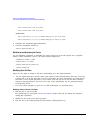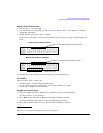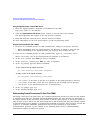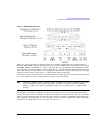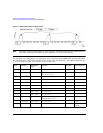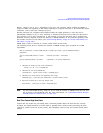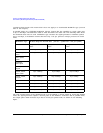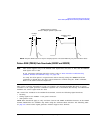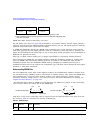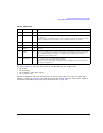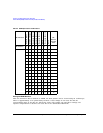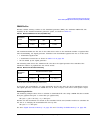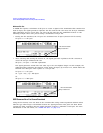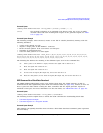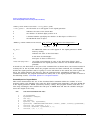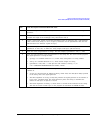
310 Agilent N518xA, E8663B, E44x8C, and E82x7D Signal Generators Programming Guide
Creating and Downloading User-Data Files
Pattern RAM (PRAM) Data Downloads (E4438C and E8267D)
PRAM files differ from bit and binary user files.
Bit and binary user files (see page 286) download to non-volatile memory and the signal generator
loads the user file data into PRAM (volatile/waveform memory) for use. The signal generator adds the
required control bits when it generates the signal.
A PRAM file downloads directly into PRAM, and it includes seven of the required control bits for
each data (payload) bit. The signal generator adds the remaining control bits when it generates the
signal. You download the file using either a list or block data format. Programs such as MATLAB or
MathCad can generate the data.
This type of signal control enables you to design experimental or proprietary framing schemes.
After selecting the PRAM file, the signal generator builds the modulation scheme by reading data
stored in PRAM, and constructing framing protocols according to the PRAM file data and the
modulation format. You can manipulate PRAM data by changing the standard protocols for a
modulation format such as the symbol rate, modulation type, and filter either through the front panel
interface or with SCPI commands.
Understanding PRAM Files
The term PRAM file comes from earlier Agilent products, the E443xB ESGs. PRAM is another term
for waveform memory (WFM1), which is also known as volatile memory. This means that PRAM files
and waveform files occupy the same memory location. The signal generator’s volatile memory
(waveform memory) storage path is /user/BBG1/waveform. For more information on memory, see
“Signal Generator Memory” on page 281.
The following figure shows a PRAM byte and illustrates the difference between it and a bit/binary
user file byte. Notice the control bits in the PRAM byte.
Only three of the seven control bits elicit a response from the signal generator. The other four bits
are reserved. Table 8-5 describes the bits for a PRAM byte.
E4438C ESG E2867D PSG
Custom
a
a. For ESG, requires Option 001, 002, 601, or 602, for PSG requires Option 601 or 602.
TDMA
b
b. Real-time TDMA modulation formats require Option 402 and include EDGE, GSM, NADC, PDC,
PHS, DECT, and TETRA.
Custom
a
Table 8-5 PRAM Data Byte
Bit Function Value Comments
0 Data 0/1 This is the data (payload) bit. It is “unspecified” when burst (bit 2) is set to 0.
User File Data Byte:
MSB
Payload Bits
PRAM File Data Byte:
1 1 0 1 0 1 0 1
Control bits
Payload bit
LSB
1 0 0 1 1 1 0 1
MSB
LSB



